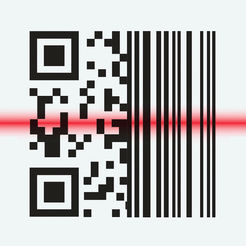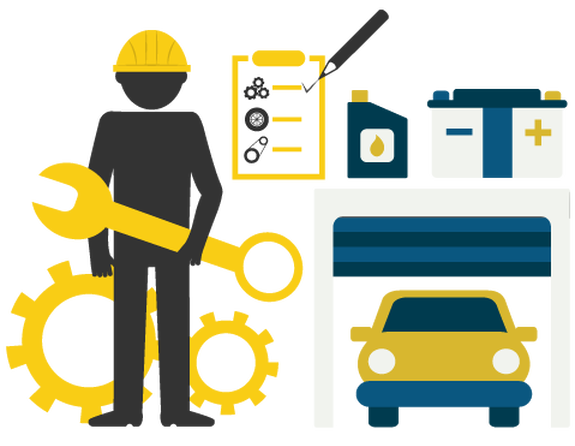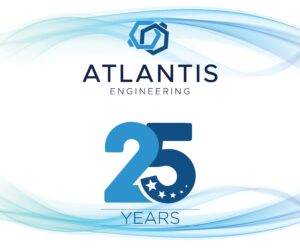 Η ανάγκη διαχείρισης μεγάλου όγκου οντοτήτων είναι συνυφασμένη με την προσπάθεια του ανθρώπου να ταξινομεί και να κωδικοποιεί τα στοιχεία κάθε οντότητας. Η μεγάλη συνεισφορά του Αριστοτέλη στη μελέτη του φυσικού κόσμου συνίσταται στην πρώτη συστηματική καταγραφή του ζωικού και φυτικού βασιλείου, δίδοντας τις πρώτες «κωδικές» ονομασίες στις κατηγορίες των φυτών και τα είδη των ζώων.
Η ανάγκη διαχείρισης μεγάλου όγκου οντοτήτων είναι συνυφασμένη με την προσπάθεια του ανθρώπου να ταξινομεί και να κωδικοποιεί τα στοιχεία κάθε οντότητας. Η μεγάλη συνεισφορά του Αριστοτέλη στη μελέτη του φυσικού κόσμου συνίσταται στην πρώτη συστηματική καταγραφή του ζωικού και φυτικού βασιλείου, δίδοντας τις πρώτες «κωδικές» ονομασίες στις κατηγορίες των φυτών και τα είδη των ζώων.
Αντίστοιχα από τα αρχαία χρόνια όλοι οι αναπτυγμένοι πολιτισμοί, είχαν ως βάση της κοινωνικής τους οργάνωσης την καταγραφή σε οργανωμένα αρχεία όλων των πολιτών τους. Έτσι και σήμερα η ταυτότητα κάθε πολίτη είναι συνδεδεμένη με τον «κωδικό» της αστυνομικής του ταυτότητας. Βέβαια για τις ανάγκες μιας σύγχρονης κοινωνίας πολλές φορές υπάρχουν παράλληλες κωδικοποιήσεις που εξυπηρετούν διαφορετικές ανάγκες (π.χ ΑΦΜ, ΑΜΚΑ).
Αλλά και μέσα σε ένα εργοστάσιο είναι πολλοί οι κωδικοί που χρησιμοποιούνται για τον ίδιο εξοπλισμό: Κωδικός μηχανής, Κωδικός λογιστηρίου, Serial number κατασκευαστή κλπ. Αν και η προσωπική μου άποψη είναι ότι σε πολλές περιπτώσεις όλες οι κωδικοποιήσεις μπορούν να ενοποιηθούν, σε αυτό το άρθρο θα περιοριστούμε στο ποια είναι προσφορότερη μέθοδος για να κωδικοποιήσει ένα τεχνικό τμήμα τον εξοπλισμό του, για τις ανάγκες της συντήρησης αυτού.
Κατά συνέπεια σε αυτό το άρθρο θα αναπτυχθούν:
-
Αποσαφήνιση δομής εξοπλισμού
-
Κανόνες λειτουργικότητα της κωδικοποίησης
-
Τρόποι σήμανσης των μηχανών
-
Αποσαφήνιση δομής εξοπλισμού
Πριν από κάθε προσπάθεια κωδικοποίησης είναι πολύ σημαντικό να αποσαφηνιστεί η δομή του εξοπλισμού τον οποίον θέλουμε να κωδικοποιήσουμε. Στο παρακάτω σχήμα βλέπουμε μία προσαρμοσμένη δομή βάσει του προτύπου ISO 14224 έτσι ώστε να μας είναι πιο κατανοητή η κατηγοριοποίηση.
Το βασικό επίπεδο σε κάθε δομή είναι το επίπεδο του εξοπλισμού (μηχανή). Το τι θα ορίσουμε ως μηχανή εξαρτάται από το τι θέλουμε να παρακολουθήσουμε. Πχ:
- Οτιδήποτε έχει κόστος και αποσβένεται λογιστικά;
- Οτιδήποτε εμφανίζει βλάβες ή πρέπει να συντηρείται προληπτικά;
- Οτιδήποτε υποστηρίζει βασική λειτουργία του εργοστασίου/εταιρίας;
Π.χ σε πολλές περιπτώσεις τους κινητήρες τους θεωρούμε ανεξάρτητους εξοπλισμούς (ξεχωριστό κωδικό) ενώ άλλες φορές ως εξάρτημα ενός κύριου μηχανήματος.
Το πόσα επίπεδα θα χρησιμοποιηθούν πάνω από το επίπεδο της μηχανής ή κάτω από αυτό εξαρτάται από το μέγεθος της εταιρίας ή/και των μονάδων αλλά και τον βαθμό ανάλυσης που θέλουμε να παρακολουθούμε τη δραστηριότητα της συντήρησης. Επίσης σημαντικό ρόλο διαδραματίζει και το είδος της πληροφορίας που θέλουμε να διαχειριστούμε: Π.χ
- Σε τι επίπεδο θέλουμε να παρακολουθούμε το κόστος συντήρησης;
- Σε τι βάθος θέλουμε να αναλύσουμε τις κατηγορίες βλαβών;
- Ποιες μηχανές συντηρούνται ταυτόχρονα σε μεγάλα σταματήματα της λειτουργίας;
-
Κανόνες λειτουργικότητας μιας κωδικοποίησης
 Αφού αποσαφηνιστεί η δομή του εξοπλισμού μπορεί να ξεκινήσει η κωδικοποίηση όλων των ανεξάρτητων μονάδων(μηχανών). Η κωδικοποίηση για να είναι αξιόπιστη και λειτουργική, προτείνεται να ακολουθεί κάποιους ή όλους τους παρακάτω κανόνες:
Αφού αποσαφηνιστεί η δομή του εξοπλισμού μπορεί να ξεκινήσει η κωδικοποίηση όλων των ανεξάρτητων μονάδων(μηχανών). Η κωδικοποίηση για να είναι αξιόπιστη και λειτουργική, προτείνεται να ακολουθεί κάποιους ή όλους τους παρακάτω κανόνες:
-
Μοναδικότητα
Ο κωδικός κάθε εξοπλισμού πρέπει να είναι μοναδικός. Το λάθος που ορισμένες φορές γίνεται, είναι να δίνεται ο ίδιος κωδικός σε ίδιες μηχανές.
-
Επεκτασιμότητα
Πολλές φορές δεν λαμβάνουμε υπόψη είτε τον ρυθμό ανάπτυξης της εταιρίας είτε τις ανάγκες αναλυτικότερης μελλοντικής κωδικοποίησης, με αποτέλεσμα να ερχόμαστε αντιμέτωποι με ανεπιθύμητους περιορισμούς από την μορφή του κωδικού που έχουμε επιλέξει. Π.χ αν στο εργοστάσιό μας έχουμε 70 μηχανές σε μια γραμμή παραγωγής καλό είναι χρησιμοποιήσουμε τριψήφια αύξουσα αρίθμηση και όχι διψήφια που θα ικανοποιούσε τις παρούσες ανάγκες. Πρότασή μας θα ήταν η κωδικοποίηση να γίνεται με χρονικό ορίζοντα τουλάχιστον 15 ετών.
-
Λιτότητα
Ο κωδικός πρέπει να είναι όσο το δυνατό μικρότερος (λιτός), χωρίς αυτό να σημαίνει ότι πρέπει να «θυσιαστούν» πληροφορίες που είναι αναγκαίο να περιέχει. Ένας λιτός κωδικός επιτρέπει την εύκολη απομνημόνευσή του και κατά συνέπεια την ευρεία χρήση του από τους εργαζομένους της εταιρίας. Είναι πολύ συνηθισμένο το φαινόμενο εκτεταμένοι κωδικοί να απαξιώνονται στην πράξη από τους εργαζόμενους και να καταλήγουν να αποτελούν αρχειακή πληροφορία.
-
Περιέχουσα πληροφορία
Είναι χρήσιμο από την ανάγνωση ενός κωδικού να μπορούμε να αντιλαμβανόμαστε κρίσιμα χαρακτηριστικά του εξοπλισμού (π.χ σε ποια γραμμή παραγωγής ανήκει, τι είδους μηχάνημα είναι, ποια είναι τα κύρια τεχνικά του χαρακτηριστικά κλπ). Βέβαια πολλές φορές παρασυρόμαστε στον όγκο της πληροφορίας που θέλουμε να εσωματώσουμε στην κωδικοποίηση με συνέπεια να αντιστρατευόμαστε στον στόχο των λιτών κωδικών
-
Μονόγλωσσος
Η χρήση χαρακτήρων από διαφορετικές γλώσσες (π.χ Ελληνικά και Αγγλικά) μπορεί να δημιουργήσει σημαντικά προβλήματα, ιδίως στην περίπτωση χρήσης του κωδικού από λογισμικό συντήρησης (CMMS). Πολλές φορές ενώ έχουμε επιλέξει τους ελληνικούς χαρακτήρες για την κάλυψη των αναγκών της κωδικοποίησης, τυχαίνει για ορισμένες μηχανές να χρησιμοποιούμε λατινικούς χαρακτήρες που προέρχονται συνήθως από την ξενική ονομασία που έχει δώσει ο κατασκευαστής.
Π.χ αν ένας χρήστης πληκτρολογεί τον κωδικό Α934, δεν γνωρίζει πάντα αν το Α είναι στα ελληνικά ή στα αγγλικά με αποτέλεσμα να υπάρχει ο κίνδυνος μην τον αναγνωρίσει το πληροφοριακό σύστημα (CMMS). Επίσης διατρέχεται ένας μικρός κίνδυνος να παραβιαστεί η μοναδικότητα του κωδικού.
Προφανώς στην κωδικοποίηση που «εξυπηρετεί» τις δικές μας ανάγκες πρέπει να ληφθούν υπόψη πολλές φορές επιπλέον παράμετροι π.χ:
- Πως θα κωδικοποιηθούν τα μηχανήματα/όργανα/εξαρτήματα που βρίσκονται πάνω σε ενιαίο δίκτυο(π.χ Αέρας, ατμός, ρεύμα, νερό κλπ) και εξυπηρετούν διαφορετικά μηχανήματα;
- Θα πρέπει να αποτυπώνεται η συσχέτιση μεταξύ κύριου και δευτερεύοντος εξοπλισμού;
- Θα πρέπει να κωδικοποιούνται μόνο τα μηχανήματα ή και οι θέσεις στις οποίες αυτά τοποθετούνται (Πολύ χρήσιμο για τις περιπτώσεις όπου έχουμε μετακινούμενο εξοπλισμό);
- Πως πρέπει να κωδικοποιηθούν τα μηχανήματα που είναι εφεδρικά και βρίσκονται στην αποθήκη;
-
Τρόποι σήμανσης μηχανών
Η σήμανση των μηχανημάτων με τον αντίστοιχο κωδικό τους είναι επίσης πολύ σημαντική, έτσι ώστε να μπορεί να αξιοποιηθεί η κωδικοποίηση από τις διαδικασίες του τμήματος συντήρησης. Π.χ. (Να είναι βέβαιος ο τεχνίτης για τη μηχανή στην οποία αναφέρεται η εντολή εργασίας του ή ο χειριστής να μπορεί να δηλώσει αξιόπιστα τη μηχανή η οποία εμφάνισε βλάβη).
Ορισμένες γρήγορες συμβουλές για την σήμανση:
- Συνίσταται να μην υπάρχουν πληροφορίες πλέον του κωδικού της μηχανής και της περιγραφής της. Μάλιστα σε πολλές περιπτώσεις ίσως και μόνο ο κωδικός να είναι επαρκής.
- Το μέγεθος από τις ταμπέλες που θα κολληθούν πάνω στις μηχανές μπορεί να είναι ανάλογο με το μέγεθος της μηχανής και της απόστασης από την οποία μπορούμε να έχουμε πρόσβαση στη μηχανή. Αυτό βέβαια δεν σημαίνει ότι πρέπει να έχουμε πάνω από 3 διαφορετικά μεγέθη. (Π.χ σε μία μεγάλη δεξαμενή ή σε ένα μηχάνημα που δεν μπορούμε να προσεγγίσουμε από κοντά θα χρησιμοποιήσουμε τα μεγάλα μεγέθη ετικετών)
- Η αντοχή του χρησιμοποιούμενου υλικού των ταμπελών πρέπει να είναι ανάλογο της φύσεως της παραγωγικής διαδικασίας (π.χ περιβάλλον υγρό, ή θερμό ή μεταφορά βαρειών αντικειμένων). Συνήθως χρησιμοποιούνται μεταλλικές πινακίδες στις οποίες υπάρχει δυνατότητα χάραξής τους. (Επειδή πολλές φορές απαιτείται η διαδικασία επανέκδοσης ή προσθήκης ταμπελών καλό να εξασφαλίζεται η ανάλογη ευελιξία). Επίσης πλέον υπάρχουν πολύ καλές πλαστικές ταμπέλες ή ετικέτες υψηλής αντοχής που μπορούν να εκτυπωθούν σε κλασικό εκτυπωτή laser.
- Σημαντική είναι και η διαδικασία σταθεροποίησης πάνω στον εξοπλισμό. Μηχανικές συγκρατήσεις είναι πιο επίπονες/χρονοβόρες στην εφαρμογή τους, ενώ συνήθως χρησιμοποιούνται κόλλες υψηλής αντοχής.
- Τέλος στις περιπτώσεις που επιθυμείτε να υπάρχει άμεσης ανάγνωσης των κωδικών από ηλεκτρονικές συσκευές (κινητά τηλέφωνα, tablet) τα οποία συνεργάζονται με το εταιρικό CMMS τότε συνίσταται η τοποθέτηση ετικετών NFC, ή QR code / barcode.
Σε κάθε περίπτωση μια σωστή διαμόρφωση της δομής του εξοπλισμού και της αντίστοιχης κωδικοποίησης αυτού, μπορεί να είναι αποφασιστικής σημασίας για την αποτελεσματική εφαρμογή των διαδικασιών του τμήματος συντήρησης. Αντίθετα λανθασμένες πολιτικές κωδικοποίησης, έχουν οδηγήσει ακόμα και στην ακύρωση των πληροφοριακών συστημάτων συντήρησης (CMMS) τα οποία έχει προμηθευτεί η εταιρία.
Κλείνοντας αυτό το άρθρο θα θέλαμε να παροτρύνουμε τον κάθε μηχανικό που αναλαμβάνει ένα έργο κωδικοποίησης εξοπλισμού να αφιερώνει μεγαλύτερο μέρος του χρόνου του στον σχεδιασμό της κωδικοποίησης παρά στην εφαρμογή της.








